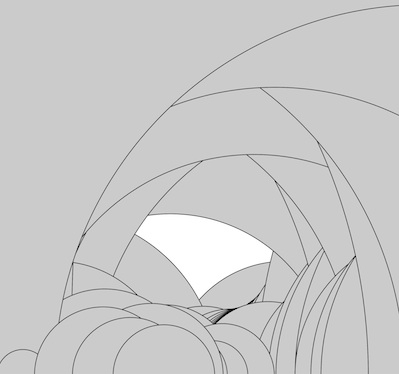
NET Maps
AIM - July 2016
It is human nature to try to classify things—that is, to sort them into organized types. Many of the central problems in mathematics are problems of classification of various types of related mathematical objects. The classification of finite groups, for example, was a landmark accomplishment of the last century, and the classification of manifolds continues to challenge topologists.

The AIM SQuaRE “The global dynamics of Thurston’s pullback map” with participants, William Floyd, Gregory Kelsey, Sarah Koch, Russell Lodge, Walter Parry, and Kevin Pilgrim, sought to classify the particular dynamical systems known as nearly Euclidean maps. The late mathematician William Thurston studied—among many other things—dynamical systems resulting from repeated iteration of a mapping from the two-dimensional sphere to itself. Applying a mapping over and over again, and watching what happens to a point, can produce fantastic and beautiful patterns that are intriguing to mathematicians. He focused on some particularly nice ones, the Euclidean Thurston maps, which are fully understood and classified using the tools and concepts of linear algebra. But much less well-understood is the much larger family of nearly Euclidean Thurston (NET) maps—the very simplest generalizations of the Euclidean ones. These are the dynamical systems studied by this SQuaRE.
It turned out that the tools they used borrowed from an amazing range of areas of mathematics. Moreover, it also turned out that the classification of NET maps could be made practical in the sense that computer algorithms could be developed and used to systematically list and study examples. The
elaborate web site
with over 50,000 examples produced by the participants shows the effectiveness of the algorithms that they developed for answering many basic questions. For more technical details, please see the
article by Kevin Pilgrim
.